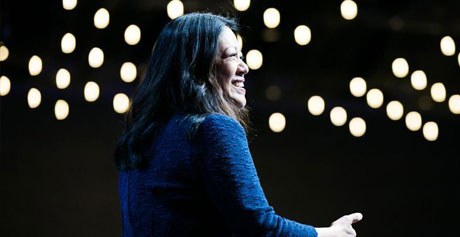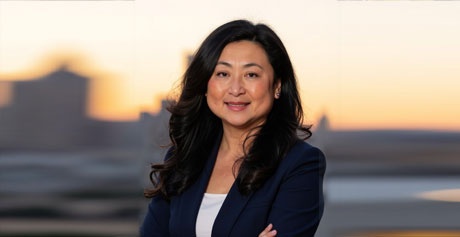She’s a Technology Storyteller, Challenging Our Perceptions with Each Masterful Stroke Meet Bay Area Artist Agnieszka Pilat
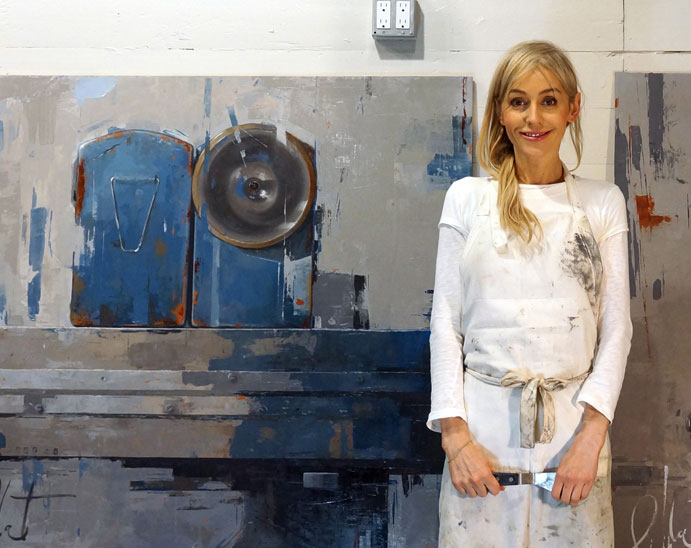
Q: What unique challenges do you face as a female artist?
AP: Well ... let’s start with some facts: female artists are underrepresented in museums and galleries. In a study of 820,000 exhibitions across the public and commercial sectors in 2018, only one third were by women artists (The Art Newspaper, 2019)
Only 26% of the winners of the Turner Prize, one of the most well-known visual art awards, have been women.
On average, only 30% of artists represented by commercial galleries in the U.S. are women.(Hyperallergic, 2014)
So, it’s a bit of an uphill battle – making it in the art world, you know...
That said, I have many collectors who are men and they support my work because they are acutely aware that being an artist is a hard career path for a woman. I value that enormously.
Q: Which artists and styles are your biggest influences?
AP: I grew up in Eastern Europe surrounded by Soviet propaganda posters so that certainly shaped my taste to some extent.
Most of my influences are European and Soviet/Russian artists: Ilya Repin, Vladimir Makovsky, Valentin Serov.
From the contemporary, living artists, Jenny Saville for her painting style; She’s one of the most talented and creative contemporary painters and I respect her for the mastery of craft and technical aspects of her painting.
Q: It’s often said about your work that you “humanize machines”. Was that intentional?
AP: Oh yes! That is the premise of my work. You see I was trained as a portrait painter. Now I am a machine painter. They are very connected – I might even say that machines represent the best of humanity: every time man wants to do something great; he builds a machine! Machine is nothing else than an extension of the human mind, human ideas made real ... how great is that!
I see the role of an artist as a compass, a DJ re-mix the Old and New, perhaps an oracle for what the future might bring. I like using the old medium (oil painting) to tell the story of innovation – it’s that contrast, dissonance of old and new, jazz of different ideas that excites me.
When we look at the history of art, portraiture is the most reoccurring theme: portraiture was reserved first for Gods, then Aristocracy, then the common men. This is a new century: the century of technology and painting human portraiture is too archaic; it’s the Machine that holds the reins of power today. Hence my heroic machine portraits.
Q: How do you price your work?
AP: It can range from $5,000 – $25,000.
Q: Your latest tech-themed series is titled #disrupt. What is its message?
AP: Technology is disrupting industry, culture and our way of living. There’s growing anxiety in times of sweeping changes like today. In times like these, humanity is looking for answers about the future by learning from the lessons of the past. Europeans study the ruins of their predecessors, ancient Greece and Rome to see historic patterns and perhaps avoid making the same mistakes or find comfort.
For me, in America, built on Industry and technology, derelict machine or an old factory is the equivalent of that culture.
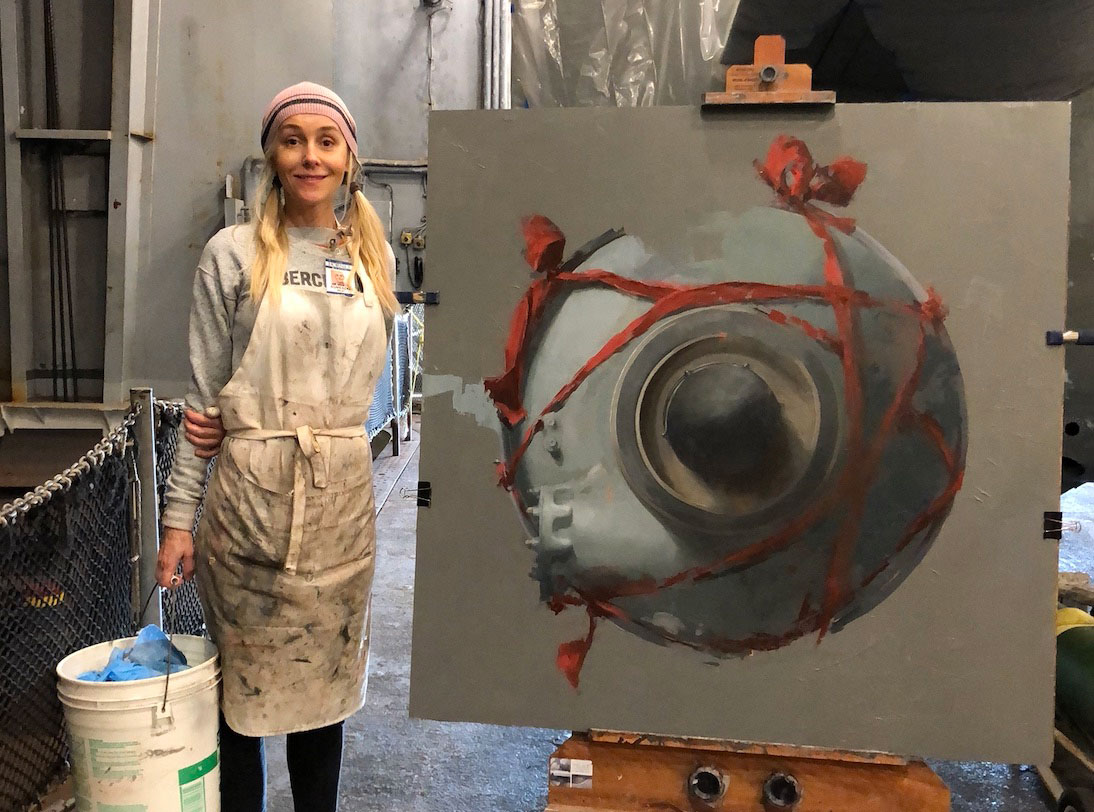
Q: Have you succeeded in your efforts to establish greater patronage for San Francisco’s cultural institutions from the barons of Silicon Valley?
AP: Let me start by saying that telling a story about American technology is a calling for me, a service to America, not just a career. My attitudes and expectations are always grounded in that. Having a strong career is necessary to tell that story, but it helps to avoid entitlement trap that would be so easy to fall into.
Now ... let’s be honest: being an artist, a female artist in Silicon Valley is not easy. It’s ridiculously hard. We are talking about selling art made by an eastern-European woman in a place that Emily Chang called Brotopia.
Now, you add on top of that another layer: by large, Silicon Valley does not support the arts, this is not New York’s patronage culture. Everything I have accomplished, all-access, commissions and residencies are a result of direct personal introductions by a handful of my patrons, collectors and friends. I have not received any support from San Francisco’s cultural institutions.
Now - I have been generously welcomed by some of the corporate giants in the Valley and my work has been met with a spirit of curiosity and support. Most of my patrons are actually private collectors; many of them are in the space of technology – executives, investors, and founders. If it weren’t for them, I would have to get a job, (many artists have to teach to support themselves) or leave the Bay Area.
Q: What's the greatest fear you've had to overcome to get where you are today?
AP: I was afraid I wasn’t talented enough. I remember visiting the Academy of Art and seeing students produce amazing drawings and paintings and being terrified that I am not talented enough to get to that level. Now I know that what appears as natural talent is just a skill acquired through hard work, good instruction and perseverance. I believe that is true in most domains – even though it is in the arts that the concept of natural talent is so prevalent. One of my biggest personal accomplishments is the fact that I mastered painting and I know in my heart it was all thought my hard work – talent had very little to do with it.
Q: Can you tell our audience one of the most memorable moments of your career?
AP: Well ... that must had been delivering a painting to a high profile collector in Silicon Valley (he has asked to keep his name private). It felt like delivering a most precious artifact to a president of a country! When I showed up in my old beaten up pickup truck, there were squads of security guards wearing black shades and dark suits, with radios and dogs sniffing around. It was quite a scene! Everyone was very lovely, but I guess I just didn’t expect it, so it made a real impression on me.
Q: What’s one lesson you’ve learned in your career that you can share with our audience?
AP: I learned to believe that if you do excellent work for long enough time, the world will notice. Endurance and excellence matter. Pick a path and stick to it. To become a master in your field, you must commit to a domain and become fluent in its language – that means a deep understanding of a field that can be pretty narrow. That allows you for well-informed and competent innovation in your field. By applying intellectual curiosity and commitment to growth from a position of strength, you will create authentic progress that will pay dividends over time. This is an attitude that requires great patience and not everyone has that. Like I said it’s more about endurance then intensity: it’s easy to get excited about learning a new skill and obsessively study it - but after a year or two when the excitement wears off, when there’s no apparent end in sight – having the passion and commitment to keep on growing in your field – that’s where masters are separated from the crowd.
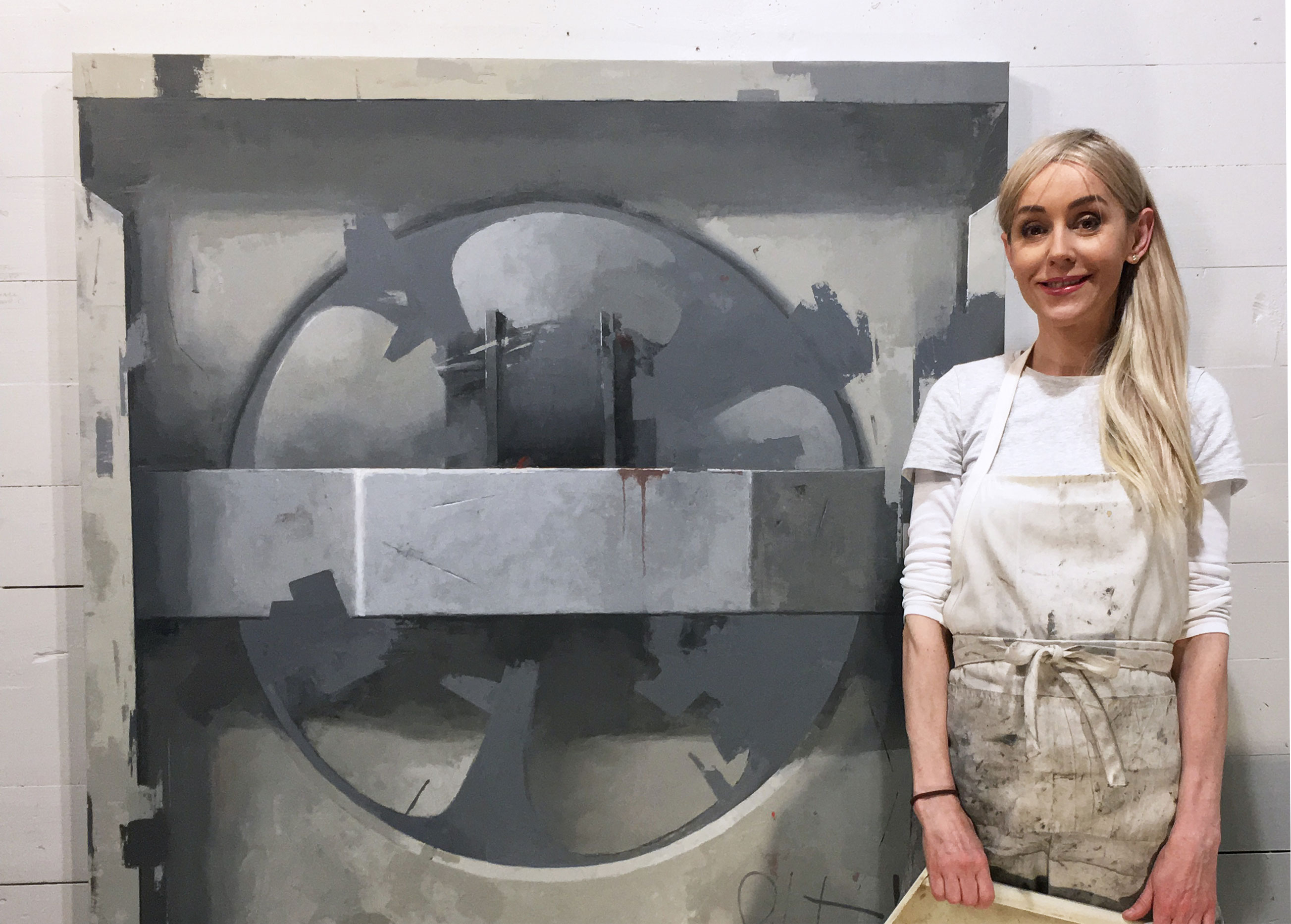
Q: Which woman inspires you and why?
AP: Grace Hopper for her intellectual curiosity, commitment to excellence and patriotism. She was a true outlier and a pioneer for women by perusing a career in computing and mathematics and by joining the U.S. Navy. We need more women like this today: lead by example, proof your own worth and competence by hard work, not by tearing others down. She knew how to motivate others how to do their best and aspire for more.
Q: What are some of the challenges you feel women face today?
AP: Perhaps too many possibilities and opportunities and the mindset that we can have it all!
We can probably all agree there are three main pillars in life: health, personal life, and professional career. It’s really difficult to give your fullest to each one of them – there simply aren’t enough hours in a day but even more importantly the mental space to process it all.
I certainly made a decision to prioritize my art career but that came at a personal cost. Most women think of starting a family at some point and make a decision to slow down in their professional lives. It’s a personal choice and I certainly know of many top-performing women who have kids. It’s not easy and unless they have a great partner, your health or romantic relationship might suffer. I guess all I’m saying is that if you want to be a top performer in your field, you’ll probably have to forgo some of your family time, prioritizing your love life or taking care of your body and getting enough sleep. Alternatively, if you want to be the best mom, you will probably pour a little less energy into your career or your love life. I think it’s important to ask ourselves, what is that matters to us most and prioritize our time and energy around that. I don’t think there’s any wrong choice, as long as we make it consciously rather than trying to make every single thing a top priority and being anxious from underperforming in all aspects of life.
Q: What advice would you give to young women who want to succeed in the workplace?
AP: Always do the right thing and always do your best. Go beyond of what’s expected of you. There are no shortcuts to excellence. And of course, there’s no such thing as a guarantee of success – in any domain, including professionally. But with the attitude of excellence as a professional, you develop a brand, and everything is really based on that. That is the part that you can control – your brand, not who is your boss, who are your colleagues or customers, how the economy is doing... But your brand: that is your domain. Ask yourself what brand do you want to be recognized as?
At the end of the day, even if everything else were to fail, you can feel good about yourself – that’s what matters most. That’s my definition of success.
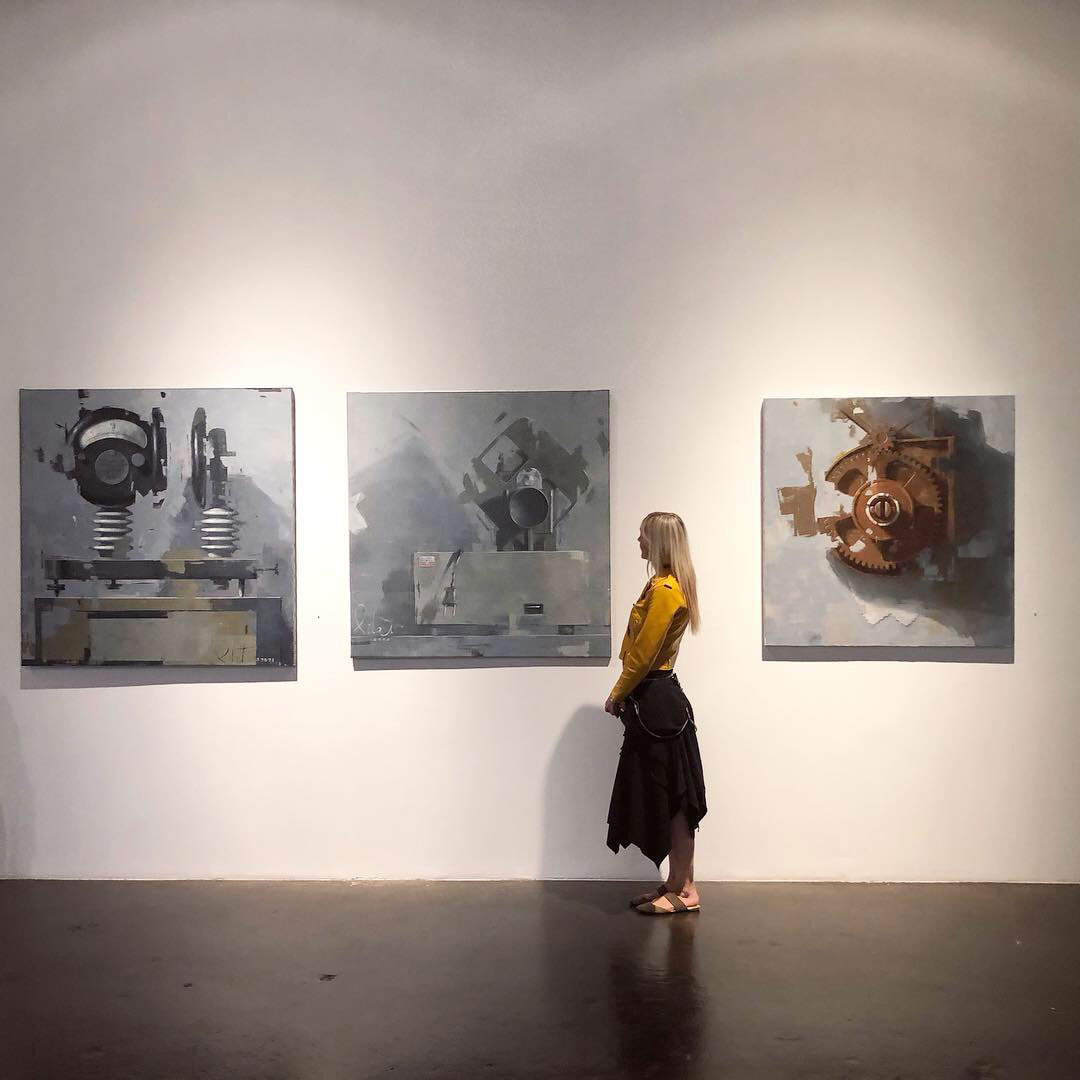
Four Things About Agnieszka Pilat
1. If you could talk to one famous person past or present, who would it be and why?
Hedy Lamarr, an Austrian- American film actress and inventor.
Lamarr’s fame came from her movie roles where she was celebrated for her beauty, but she was also a brilliant inventor! She patented an invention known as “frequency hopping,” a telecommunications technology that uses a code which jumps between different radio wave frequencies and it’s the foundation for wireless technologies like Wi-Fi, military communication, GPS, and drone technology.
It would be most interesting to chat with her about our need as women to express ourselves in the way we look and the hazards of woman’s beauty standing in the way of getting credit for our minds.
2. What were you like as a student?
I was a real goodie-goodie, always over-prepared for classes. My mom was very demanding of me and I was expected to be the top student and bring only excellent grades. That taught me early in life how to be disciplined and have strong work ethics, I think that’s why hard work comes so naturally to me. When I was a kid at school, Poland was going through a transition from communism to a free-market economy and my parents started a business. They worked incredibly hard at it and we, the kids (my brother and I) were expected to do our part, which was to be good students and stay out of trouble. So, I did just that.
3. What app can’t you live without?
INSTAGRAM
Instagram has been a very important tool in my professional career. I really think of my IG followers as my extended family. I have no doubt in my mind, that without them I would be less productive. I have a large audience, which is constantly expecting new posts and that forces me to produce content and have a pretty regular work routine. You see as an independent artist; I don’t really have a forced schedule and at times I don’t feel like going to the studio. Having that spotlight in the form of IG ensures that I do.
Additionally, I mentor many young artists on the platform, and I find a lot of fulfillment from it. I had some great teachers at the Academy of Art, they made a real difference in helping me grow as an artist, and I want to do the same for others. Being in a position I am in – having a large platform and people who listen to you – it’s humbling but also a great responsibility. It’s an amazing feeling to motivate people to do their best and help them believe in themselves.
4. Which celebrity do you most identify with?
Scarlett O’Hara –a fictional character from Gone With The Wind. She’s a complicated character, part hero, part villain – a beautiful, strong woman who is looking for self-worth in relationships with men, forgetting in the process what really matters: Tara. Tara is the land of her forefathers, her legacy and security. Tara is her family’s most honest manifestation of hard work, pragmatism, and loyalty. Tara is Scarlett’s true, everlasting love and ultimately every decision she makes in her life is to protect that legacy, forgoing her personal happiness and putting herself on the line to protect the land. The problem is she keeps on forgetting that... she keeps on looking for meaning in romantic love, often forbidden love.
The story of Scarlett takes place in a time of vast cultural and historical changes – but ‘gone with the wind’ might as well refer to today’s industrial era America replaced with different culture and economy: information technology and globalism. That matters to me because of my life’s work, painting heroic portraits of machines reflects the vast changes happening in the American landscape. So that’s a parallel between our stories.
Now personally - I too, not unlike Scarlett, get entangled in looking for my self-worth in romantic love, forgetting all the while what the rock of my existence is: my love for American technology and industry expressed in my art, in my paintings. When everything else fails, and I have major setbacks, I always come back strong by going back to the studio and engulfing myself in painting portraits of machines – everlasting, honest and loyal. American Industry is my Tara and every decision I make has to support that ultimate purpose. Every story has a villain, and to expand a bit on my childhood, what I brought out from my growing up in Poland, is that communism is an immoral, corrupt system, which broke the spirit of Polish people. So my love for American technology, industry, and entrepreneurship is very connected to that and anyone/anything that threatens them is the villain in my story. Technology is under attack now and I just want to play a small part in defending it, very much like Scarlett defended Tara.
